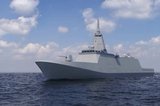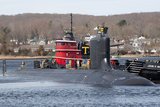Naval Warfare Preview 2025: Billion-dollar programmes will advance but unpredictable forces muddy the waters
A rendering of the Canadian Surface Combatant. (Image: BAE Systems)
If popular science-fiction is to be believed, history consists of two factors: fixed points and fluxing forces.
There are things about which we can be relatively certain. And then there are the wild cards, elements which can be changed, and can change the world around them in a heartbeat.
2025 in the naval domain is likely to be a very historic year.
Naval fixed points are large, expensive programmes that have been promised and budgeted for, often years in advance.
And Naval fluxing forces are geopolitical shifts and technological revolutions that can take the domain in unexpected new directions.
Fixed
Already have an account? Log in
Want to keep reading this article?
More from Naval Warfare
-
![Hanwha wins Australian government approval to increase its stake in Austal]()
Hanwha wins Australian government approval to increase its stake in Austal
The contract would mean the two shipbuilders can collaborate strategically and enhance shipbuilding capabilities in Western Australia.
-
![Royal Australian Navy sizes up modernisation plans for new and existing capabilities]()
Royal Australian Navy sizes up modernisation plans for new and existing capabilities
The Australian navy is pushing ahead with its efforts to modernise its workforce and capabilities while balancing risky submarine upgrades, ageing Collins-class boats and a shrinking minehunter fleet. Head of navy capability RAdm Stephen Hughes updated Shephard on the force’s progress.
-
![UK to join US Navy’s Virginia-class submarine assembly effort to speed up construction]()
UK to join US Navy’s Virginia-class submarine assembly effort to speed up construction
The expansion of the Virginia-class submarine construction to UK shores could accelerate the project as US shipbuilders continue to fall short of delivery goals.























